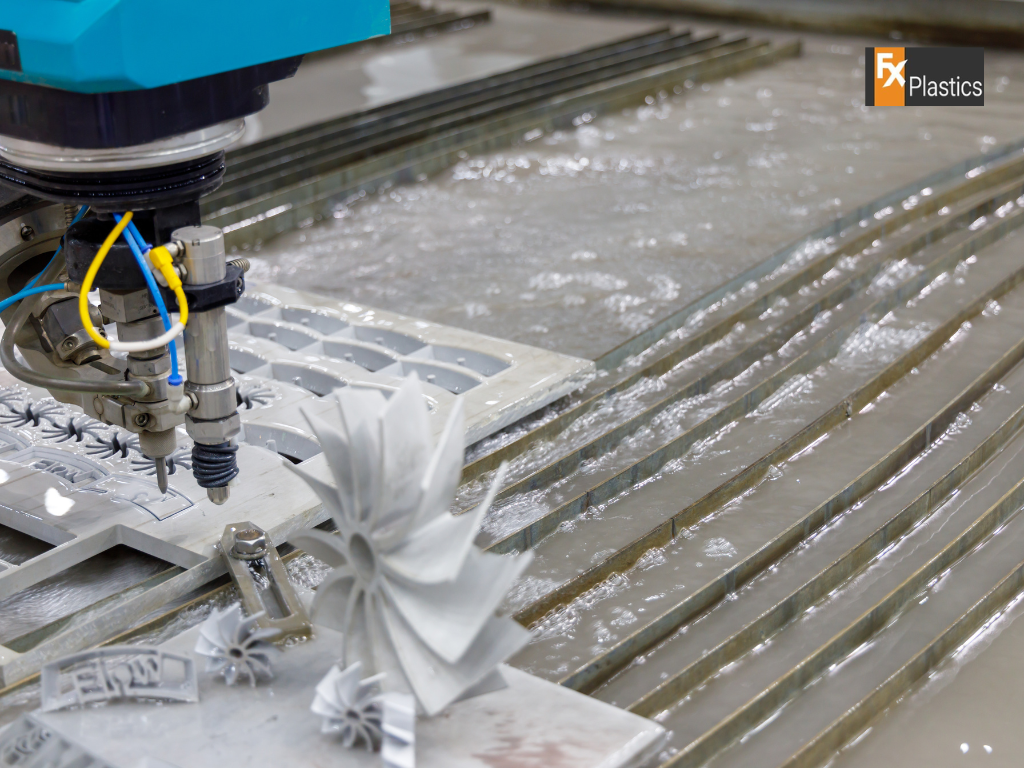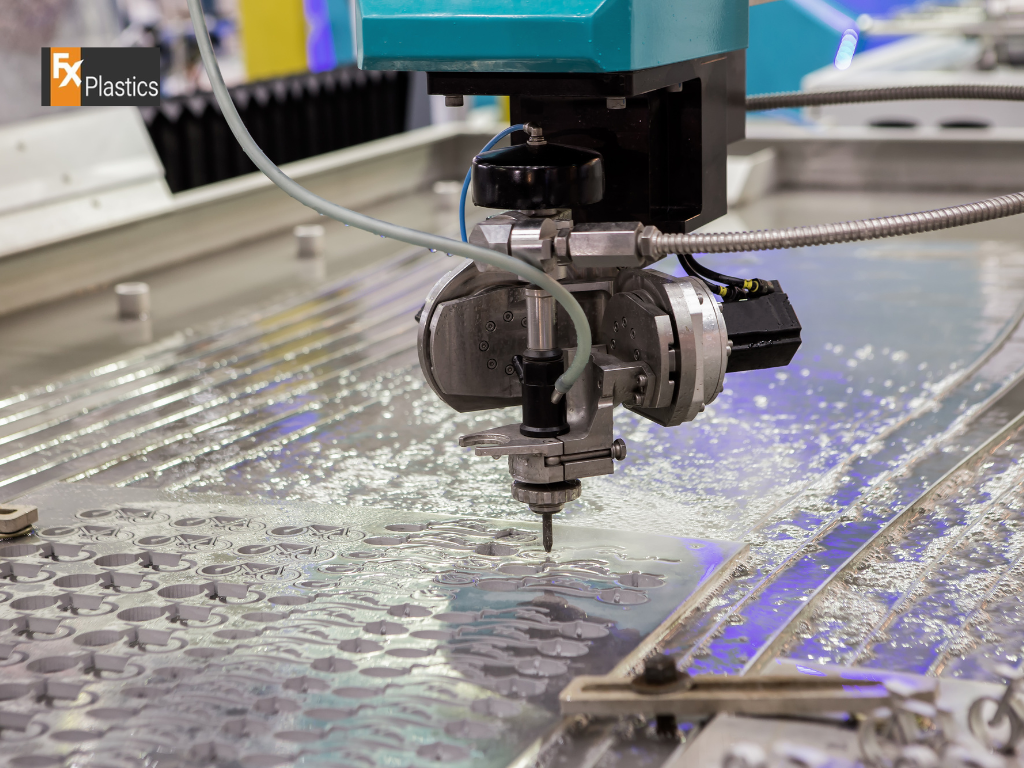Perspex, known for its clarity, strength, and versatility, is increasingly used in large-scale applications across various industries. In the construction sector, it’s utilized for architectural features like large windows, skylights, and facades. In retail, it finds use in extensive display installations. Perspex is also prominent in the signage industry for large, illuminated signs due to its excellent light-transmitting properties. Even in art and design, large Perspex installations are becoming a popular medium for impactful, contemporary pieces.
The growing demand for CNC and laser cutting in large-scale Perspex fabrication.
The demand for CNC cutting in large-scale Perspex fabrication is growing due to the precision, efficiency, and versatility these technologies offer. CNC and laser cutting allow for intricate designs and precise cuts, essential in large-scale projects where accuracy is crucial. These methods also enable customization on a scale that traditional cutting methods can’t match, meeting the diverse requirements of different industries.
Challenges in Large-Scale CNC and Laser Cutting of Perspex
What unique challenges are presented in large-scale Perspex cutting?
One of the primary challenges in large-scale Perspex cutting is managing the material’s inherent properties, such as its tendency to expand and contract with temperature changes. This can affect precision in large sheets. Handling and maneuvering large sheets for cutting and installation also pose logistical challenges, requiring specialized equipment and expertise. Additionally, maintaining consistent quality across large surfaces is a significant concern.
How do these challenges differ from standard-sized Perspex cutting projects?
These challenges differ from standard-sized projects primarily in scale. While smaller projects might allow for more straightforward handling and less material variability, large-scale projects require advanced planning, greater physical space, and more sophisticated equipment to handle the size and volume of material. The risk of errors or inconsistencies is also amplified in larger projects, necessitating more rigorous quality control measures.
Technological Adaptations for Large-Scale Projects

What technological advancements are enabling large-scale CNC and laser cutting of Perspex?
Advancements such as larger, more powerful CNC routers and laser cutters have been developed to handle big Perspex sheets. These machines often incorporate advanced software for precise control and are capable of intricate cutting at a larger scale. Improvements in blade and laser technology also contribute, allowing for cleaner cuts and reduced material waste.
How have machines and software been adapted to handle larger Perspex sheets?
To accommodate larger sheets, machines have been designed with extended cutting beds and more robust handling systems to support the weight and size of the Perspex. Software adaptations include enhanced algorithms for efficient nesting (layout optimization) and path planning, ensuring that large-scale cuts are as economical and precise as smaller ones. These software improvements also allow for more complex and intricate designs to be realized on a large scale, expanding the creative possibilities of Perspex fabrication.
Precision and Accuracy in Large Formats
How is precision maintained in CNC and laser cutting of large-scale Perspex projects?
Precision in large-scale Perspex cutting is achieved through advanced CNC and laser technologies equipped with high-precision cutting heads and sophisticated control systems. These systems are designed to maintain consistent accuracy across the entire surface of the Perspex, even over large areas. Calibration of machines is performed regularly to ensure that cutting paths are exact, and the equipment is maintained to the highest standards to prevent any drift or misalignment.
Techniques and tools used to ensure accuracy over larger surfaces.
Techniques to ensure accuracy include the use of computer-aided design (CAD) software to pre-plan cutting paths and layouts accurately. High-quality cutting blades and laser optics are essential to achieve clean and precise cuts. Specialized clamping and support systems are used to securely hold large Perspex sheets in place, preventing movement or vibration during the cutting process. Additionally, continual monitoring and adjustments during the cutting process help maintain precision throughout.
Material Handling and Workflow Management
Best practices in material handling for large-scale Perspex sheets.
Best practices in material handling include the use of mechanical aids such as hoists and suction lifters to move large Perspex sheets safely. Storing the sheets flat and in a clean, dry area to prevent warping or damage is crucial. During handling, care must be taken to avoid scratches or impacts, using protective coverings where necessary.
Workflow management techniques to streamline large-scale cutting processes.
Efficient workflow management involves scheduling cutting tasks to maximize machine usage and minimize downtime. Organizing the workspace for easy access to materials and tools can significantly improve efficiency. Implementing a systematic approach for the sequence of operations, from cutting to finishing and assembly, ensures a smooth workflow. Additionally, using software for tracking progress and coordinating different stages of the project helps in maintaining an organized and efficient workflow.
Project Planning and Design Considerations
Key factors in project planning for large-scale Perspex cutting.
Key factors include understanding the scope and requirements of the project, setting realistic timelines, and considering the limitations and capabilities of the cutting equipment. Budgeting for materials, labor, and potential contingencies is also crucial. Coordination with other aspects of the larger project, such as installation or integration with other components, needs to be planned meticulously.
Design considerations specific to large-scale Perspex applications.
Design considerations for large-scale applications involve ensuring that designs are feasible and cost-effective to produce. This includes considering the limitations of Perspex in terms of size and thickness, as well as the impact of large-scale designs on structural integrity and performance. Aesthetically, the design should consider the visual impact of large Perspex elements and how they interact with light, color, and the surrounding environment.
Quality Control and Safety Measures
Quality control measures to ensure the integrity of large-scale Perspex pieces.
Quality control in large-scale Perspex fabrication involves several key steps. Initial material inspection is crucial to ensure that the Perspex sheets are free from defects and are of the required grade and thickness. During the cutting process, continuous monitoring is necessary to detect any deviations or errors early on. Post-cutting, each piece undergoes thorough inspection for dimensional accuracy, edge quality, and overall finish. Documentation of the entire process and adherence to set standards helps in maintaining consistency and traceability.
Safety protocols specific to large-scale CNC and laser cutting operations.
Safety protocols in these operations include ensuring that all machinery is properly guarded and that operators are trained in safe handling techniques for large Perspex sheets. Proper ventilation is essential to avoid the buildup of fumes during laser cutting. Operators should wear appropriate personal protective equipment, such as eye protection and heat-resistant gloves. Regular maintenance of equipment and adherence to manufacturer guidelines are also critical to prevent accidents and ensure the safety of personnel.
Future Trends in Large-Scale Perspex Fabrication
Emerging trends and future developments in large-scale CNC and laser cutting of Perspex.
Emerging trends include the integration of AI and machine learning for smarter, more efficient cutting processes. Automation in material handling and workflow management is also on the rise, reducing manual intervention and increasing productivity. Advances in laser technology are leading to faster and more energy-efficient cutting methods. There is also a growing focus on eco-friendly fabrication processes, with an emphasis on recycling and reducing waste.
How these trends might shape the future of Perspex applications in various industries.
These trends are likely to enhance the capabilities and applications of Perspex in industries such as architecture, retail design, and signage. The improvements in precision and efficiency may open up new design possibilities, allowing for more complex and intricate projects. The focus on sustainability will also make Perspex a more attractive option for environmentally conscious projects. Overall, these advancements will continue to position Perspex as a versatile and desirable material in various sectors.
Conclusion
As demands in precision, efficiency, and sustainability grow, CNC laser cutting technologies are evolving rapidly. The integration of advanced software, automation, and eco-friendly practices is shaping the future of Perspex fabrication. This evolution is not only enhancing the capabilities of Perspex cutting but also expanding its applications, ensuring that it remains a vital component in the landscape of modern design and manufacturing.

